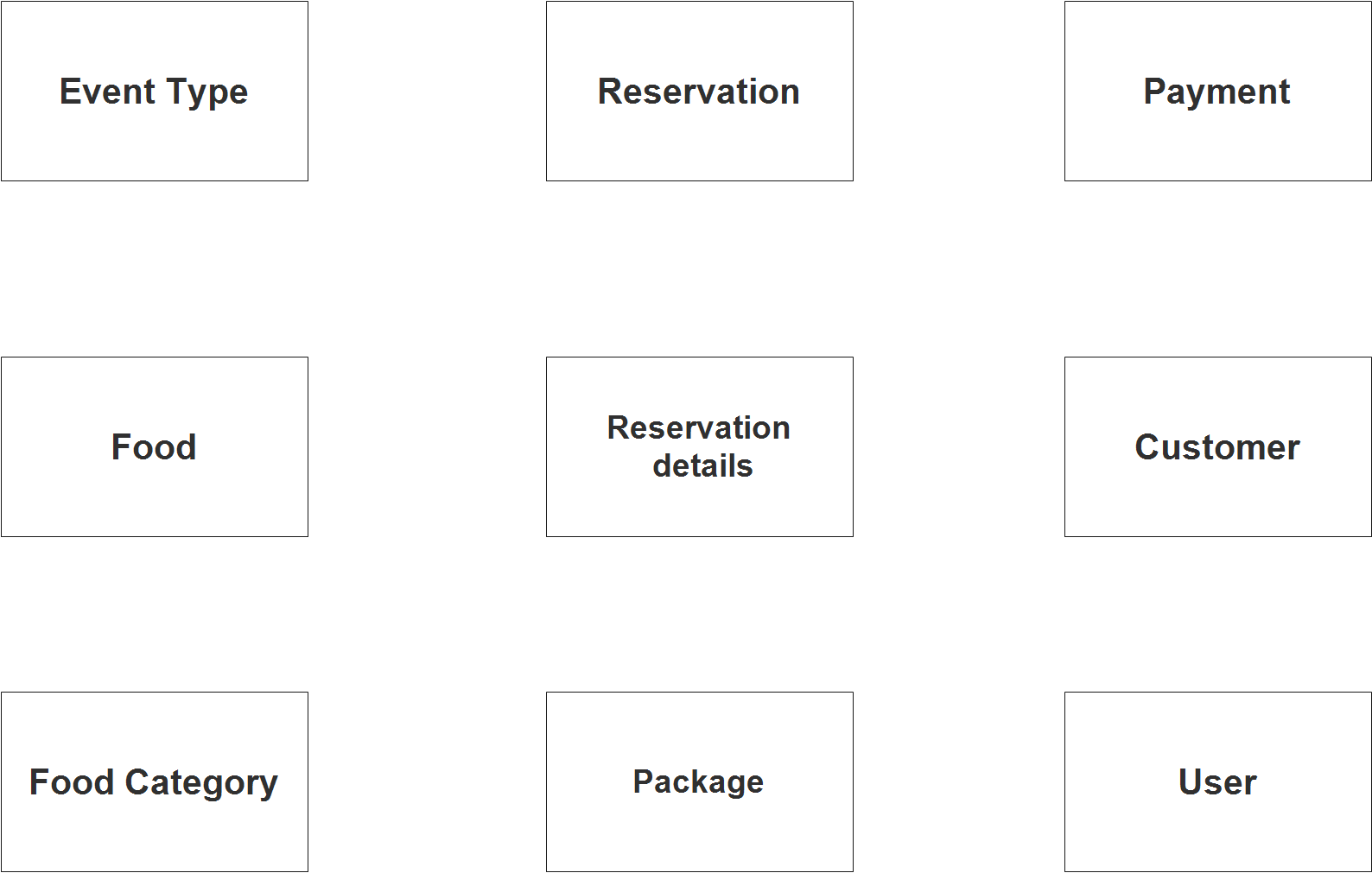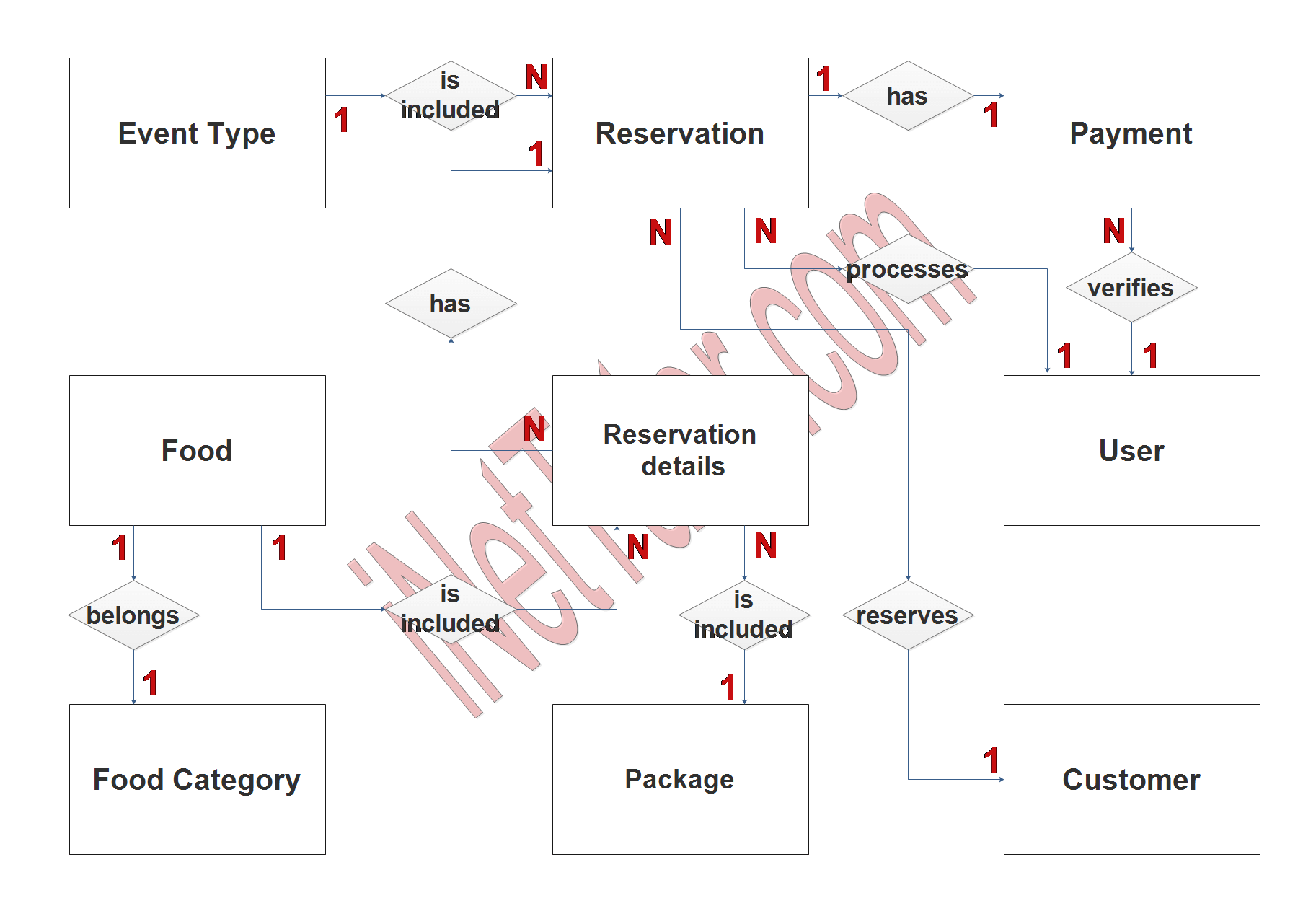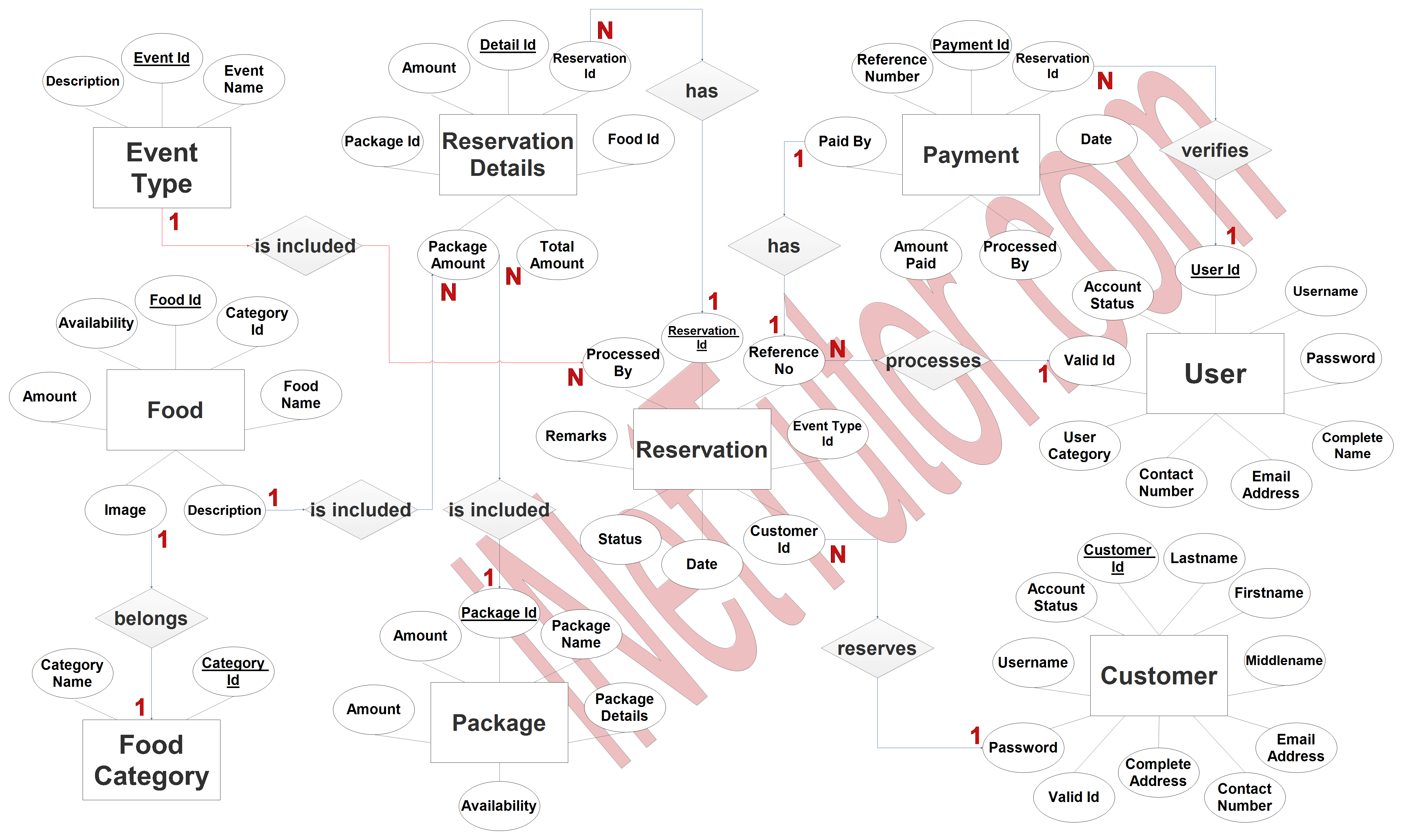
The entity relationship diagram, or ERD, preparation process for the project titled Online Catering Reservation System will be covered in detail in this article.
Table of Contents
The suggested system can offer effective tools to help users and management/admin meet their needs. The user can browse some information about catering services and reserve a service for a specific time and day. The management may also access and view every reservation made for that day, and they can calculate the total number of clients to decide how many people need to be catered for.
An online catering reservation system is a software platform that allows catering businesses to manage and accept reservations for catering events through a web-based interface. This system streamlines the process of booking and coordinating catering services, allowing businesses to more efficiently serve their clients and ultimately increase profits.
One of the primary features of an online catering reservation system is the ability for customers to easily browse and select catering options and packages online. This can include options for food and beverage menus, event venues, and other services such as event planning and decoration. Customers can typically customize their orders and specify any special requests or dietary restrictions.
The system also provides a dashboard for catering businesses to manage and track reservations, communicate with clients, and update their availability. This can include features such as automated email or text message reminders, payment processing, and the ability to create and send invoices.
We will draw an entity relationship diagram for the online catering reservation system and explain how it is made.
Let’s start from the symbols used in the ER Diagram.
Entity is represented by the rectangle shape. The entity will be our database table of Online Catering Reservation System later on.
Attribute is represented by the oval shape. This will be the columns or fields of each table in the Online Catering Reservation System.
Relationship is represented by diamond shape. This will determine the relationships among entities. This is usually in a form of primary key to foreign key connection.
We will follow the 3 basic rules in creating the ER Diagram.
In the Online Catering Reservation System, we have the following entities:
We will now draw the entities of the Online Catering Reservation System specified above and it will be represented by a rectangle shape. The image below are the entities identified in the scope of the Online Catering Reservation system.

After we have specified our entities, it is time now to connect or establish a relationship among the entities.

The last part of the ERD process is to add attributes to our entities.
Event_type entity has the following attributes:
Food entity has the following attributes:
Food_category entity has the following attributes:
Reservation entity has the following attributes:
Reservation_details entity has the following attributes:
Package entity has the following attributes:
Payment entity has the following attributes:
User entity has the following attributes:
Customer entity has the following attributes:

The entity’s or table’s main key is represented by all attributes with an underline.
The next stage is to translate the plan created on the ER Diagram into the actual database; to do this, look up the previously published Online Catering Reservation System article.
An Entity Relationship Diagram (ERD) is a graphical representation of the relationships between entities in a database. In the context of an online catering reservation system, an ERD would show the relationships between different types of data, such as customers, reservations, payments, and food orders.
The ERD for an online catering reservation system would likely include entities such as customers, reservations, payment, food, packages, event types, and users. It would show the relationships between these entities, such as the fact that a customer can make multiple reservations, or that a reservation can include multiple food orders.
Overall, an ERD is a useful tool for visualizing and understanding the structure of a database for an online catering reservation system, as it helps to clarify the relationships between different types of data and how they are related to one another.
Readers are also interested in:
You may visit our Facebook page for more information, inquiries, and comments. Please subscribe also to our YouTube Channel to receive free capstone projects resources and computer programming tutorials.
Hire our team to do the project.